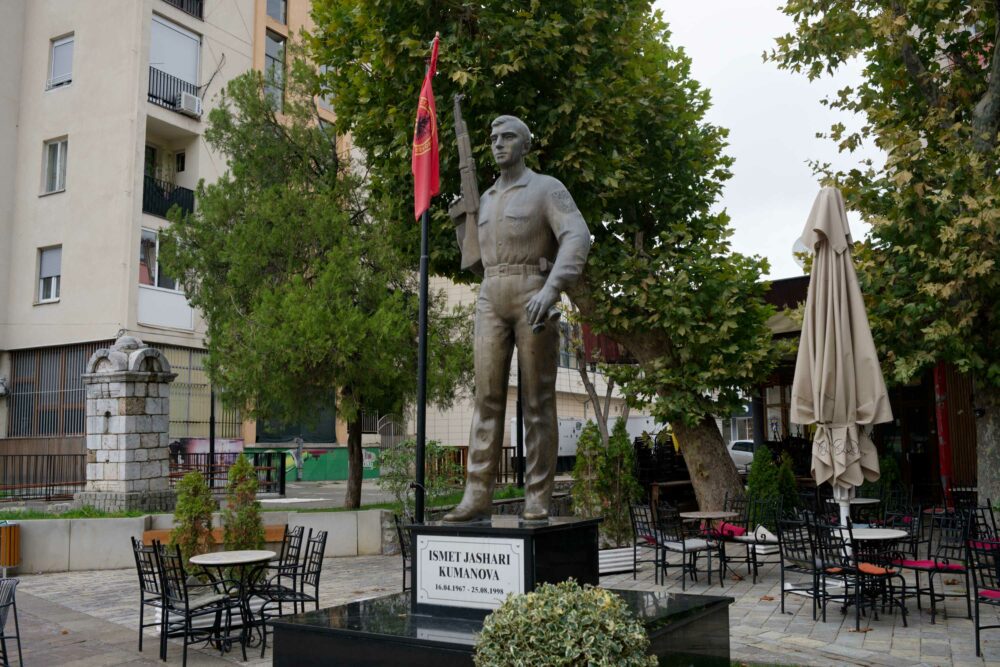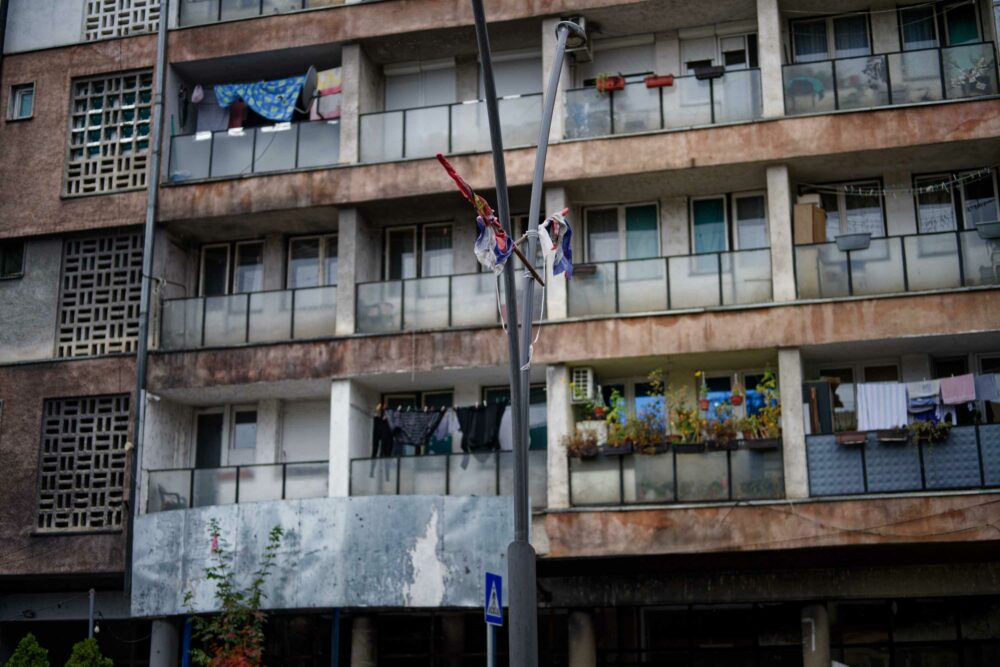Source: racin.mk
The people of Kosovo are far from reconciliation, but it remains a common desired goal. Luan Imeri, a columnist of Рацин.мк wrote this reportage a few days after visiting Kosovo with a group of friends – peace activists from the former Yugoslavia, led by the Centre for Nonviolent Action. The reportage aims to better explain the context of the current situation and the role of activists working on reconciliation and supporting efforts to bring about change.
We often talk about and debate topics we are not sufficiently familiar with. We often lack knowledge of the context and are even less prepared to view things from a different perspective. We sometimes go into the smallest of details and forget the big picture, even the topic we are meant to address. But, no matter, we often already have a position, we always know who is to blame, and even more often, we always know we are never wrong.
As a peace activist, I have been working on dealing with the past for a long time. I know we cannot solve problems from the past, but I want to give at least some small contribution to ensuring the horrors of the past are not repeated and that we don’t end up being its hostages. My job involves, among other things, lots of travel, training and meeting lots of people, and particularly working with young people. Often on trips and trainings, when we discuss certain topics from our conflict ridden past, I get the impression that younger generations (with few exceptions) have very little (if any) information about what (really) happened, and even the things they do know about are most often limited to local and national narratives filled with hatred and prejudice.
On the other hand, older generations seem to be mostly convinced (with notable exceptions) that they know what happened to us and they know exactly who is to blame and what the problem was, but they are all viewing things from their particular perspective. It is hard to change your own views, even harder to admit that many wrongs were committed also in your name and that we all live today with that burden of the past. Even worse, we seem to forget that if we don’t learn from the past, we risk repeating it.
A historically turbulent region with many conflicts
The turbulent history of the region is marked by many conflicts. Even today, peace in our region is at risk, as is hope for lasting peace. Recent events in this part of the world only go to show how little it takes to go many steps backwards.
With a group of friends, peace activists from the former Yugoslavia led by the Centre for Nonviolent Action, we decided to visit Kosovo in order to better understand the current context and meet with peace activists that play a crucial role in supporting efforts to bring about change.
Peace in Kosovo is often marred by ethnic tensions and clashes, which makes the divisions run deep. Understanding that reality, and its context, is crucial for getting an insight into the situation in the field and for current efforts aimed at reconciliation. We spoke openly with individuals committed to peace, which provided us with a first-hand perspective of the challenges they face and the progress they’ve made. What we saw in the field is truly interesting and differs from the dominant narratives we encounter every day.
Many generations of Albanians have dreamed of Kosovo becoming an independent and sovereign state. A prosperous, democratic, economically strong land of opportunity. A country in which all its citizens would be equal, have equal opportunities, and that would never allow the horrors and suffering of the past to be repeated. The price for that was high, but today Kosovo is a country. How independent, sovereign, prosperous and democratic, and how responsive to the needs of its citizens is still open for debate, but there is no doubt that Kosovo is a country. The price that was paid is illustrated by, among other things, the pictures of 1133 killed children that we saw at the exhibition of the Kosovo Humanitarian Law Center. Through items belonging to the children, the exhibition highlights the lasting and eternal pain of their deaths, but also sends a clear message that this should never happen to anyone again. There are photos of all the killed children. At the exhibition, after many years, I saw a photo of my friend Mensur, who was killed together with his family in 1999. The names of all the children are written on a long wall, but what really left a deep impression on me is that all the children’s names are included, irrespective of their ethnicity; on that wall, all the children are just children. The pain of parents who came to see the exhibition is immense. Pain and sorrow have no ethnicity there.
During this study visit, we also learned about the prejudices and difficulties faced by the Missing Persons Resource Center, a network of organisations that includes both Albanian and Serb missing persons associations, and about how difficult that work is because it constantly depends on daily politics. Unfortunately, even today, 24 years after the war, many families are still looking for their loved ones.
Mythology is deeply embedded in everything that goes on in Kosovo, even today.
We also visited Mitrovica. On our way there, we stopped to visit Gazimestan and the tomb of Sultan Murad I. Although they are not a topic of our work, mythology is deeply imprinted in everything going on in Kosovo, even today. In Mitrovica itself, tensions were high, but it was peaceful. A seemingly simple crossing of the bridge connecting the two sides of town is not as easy for a Serb (not that the life of an Albanian is much easier). The Serbs live between a rock and a hard place, between official Belgrade policy and propaganda telling them daily that they are part of Serbia, and the hard reality of their everyday lives that faces them with the fact of Kosovo as an independent country. They live in hope that sirens will not go off and they won’t have to man the barricades. And they will have to, especially those that are on Serbia’s payroll. They hope that one day they too will be asked about what they want, instead of having others decide for them. Local Serbs are waiting for the “Community of Serb Municipalities”, but in reality, they don’t know what sorts of changes it might bring. The Serbs don’t know what they would really be getting, and the Albanians don’t know what they would really be losing with the “Community”. Nonetheless, they both have a clear attitude: Serbs insist it must be established, while Albanians insist it never will be!
Meanwhile, life is lived under constant pressure, clashes and uncertainties that have been ongoing for decades and that hinder processes that would lead to genuine change. Examples of individuals working towards reconciliation that might inspire others to join the cause and stand up to divisive narratives are rarely foregrounded.
Reconciliation strategies only on paper, without implementation
During this study trip, we visited several cities and many sites of cultural heritage. These sites show not just the rich history of the region, but should also serve as bridges between communities. Unfortunately, this is not how they are being used at present. Kosovo is home to some of the most impressive cultural monuments in the region, such as the Gračanica Monastery, for example, that has been put on the UNESCO World Heritage List. We also visited the beautiful mosques and churches in Prizren. It is also impossible to miss the numerous militarised monuments to fallen fighters of the Kosovo Liberation Army. There are also many cemeteries for civilian victims. It is interesting that Pristina features, among other things, a monument dedicated to the former US president and the former US secretary of state.
Kosovo is aiming to achieve equality and respect for the rights of all citizens. A modern constitution, excellent legislation, maximum protection for the most marginalised… on paper! This was the conclusion drawn by many of the people we spoke to, whatever their ethnicity. What is lacking is proper implementation. There is no support for local initiatives that promote intercultural dialogue, education and economic cooperation contributing to sustainable peace. There are no intercultural spaces for people, where they could meet, celebrate their joint heritage and work together on projects that promote unity. The use of media to spread positive stories on cooperation and peace initiatives is crucial, but it is rare or entirely missing.
Kosovo has the youngest population in Europe. It has tremendous potential, but despite making progress, Kosovo faces challenges in terms of its economic development and integration into the international community. It is a place where the fates of many rich and many poor people intertwine. Urban development is carried out on a massive scale. The development mafia has usurped every green area.
When you travel through Kosovo, you are not just visiting a place, you are stepping into the history and culture of a unique region. The diversity, harmony and beauty of Kosovo are liable to take your breath away. For most visitors, Kosovo is a culinary revelation. Kosovo’s cuisine is incredibly diverse, ranging from traditional dishes to ultramodern creations never seen before. We enjoyed the hospitality of the local people and felt welcome wherever we went.
You can view the photos from the study trip here.

